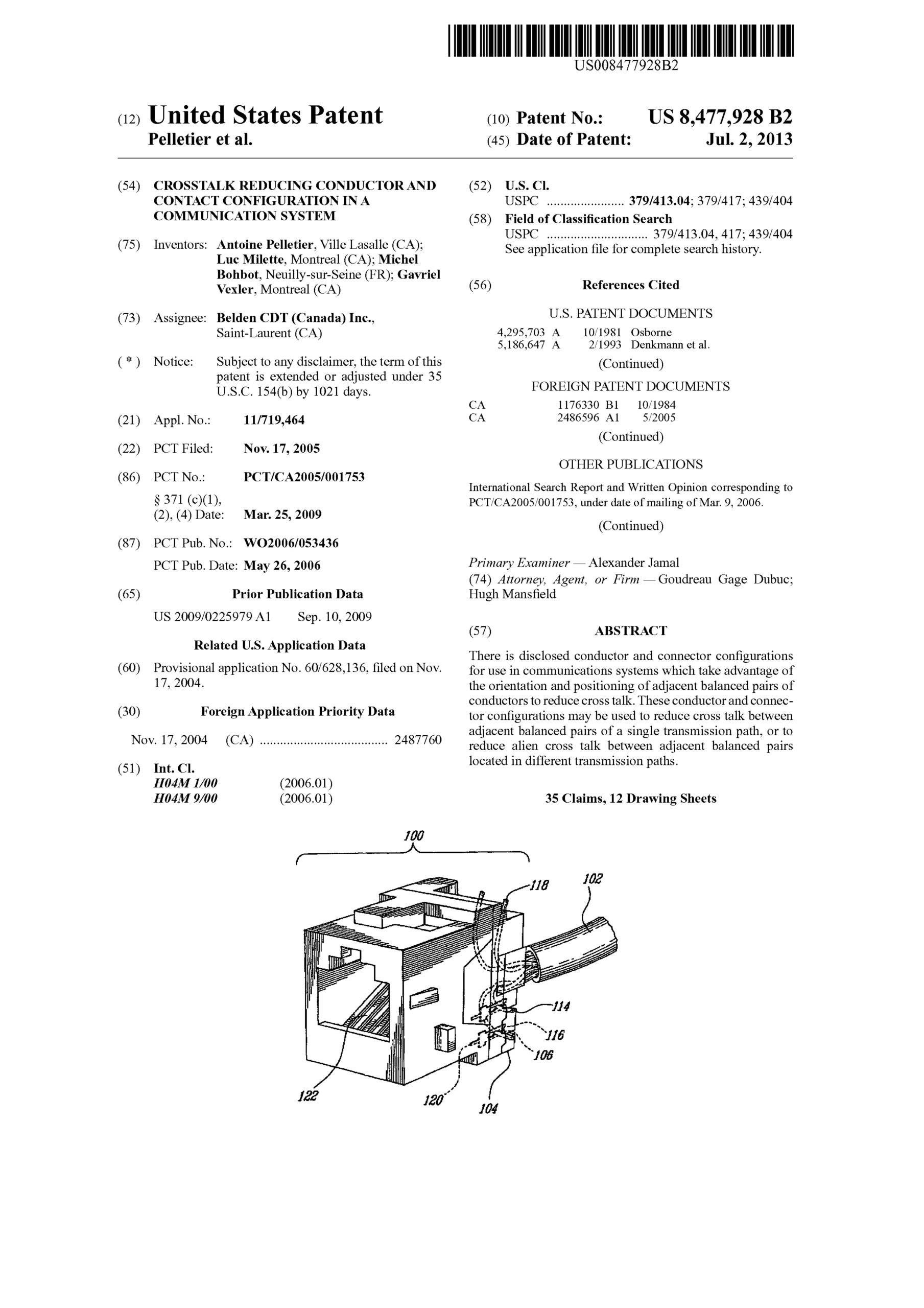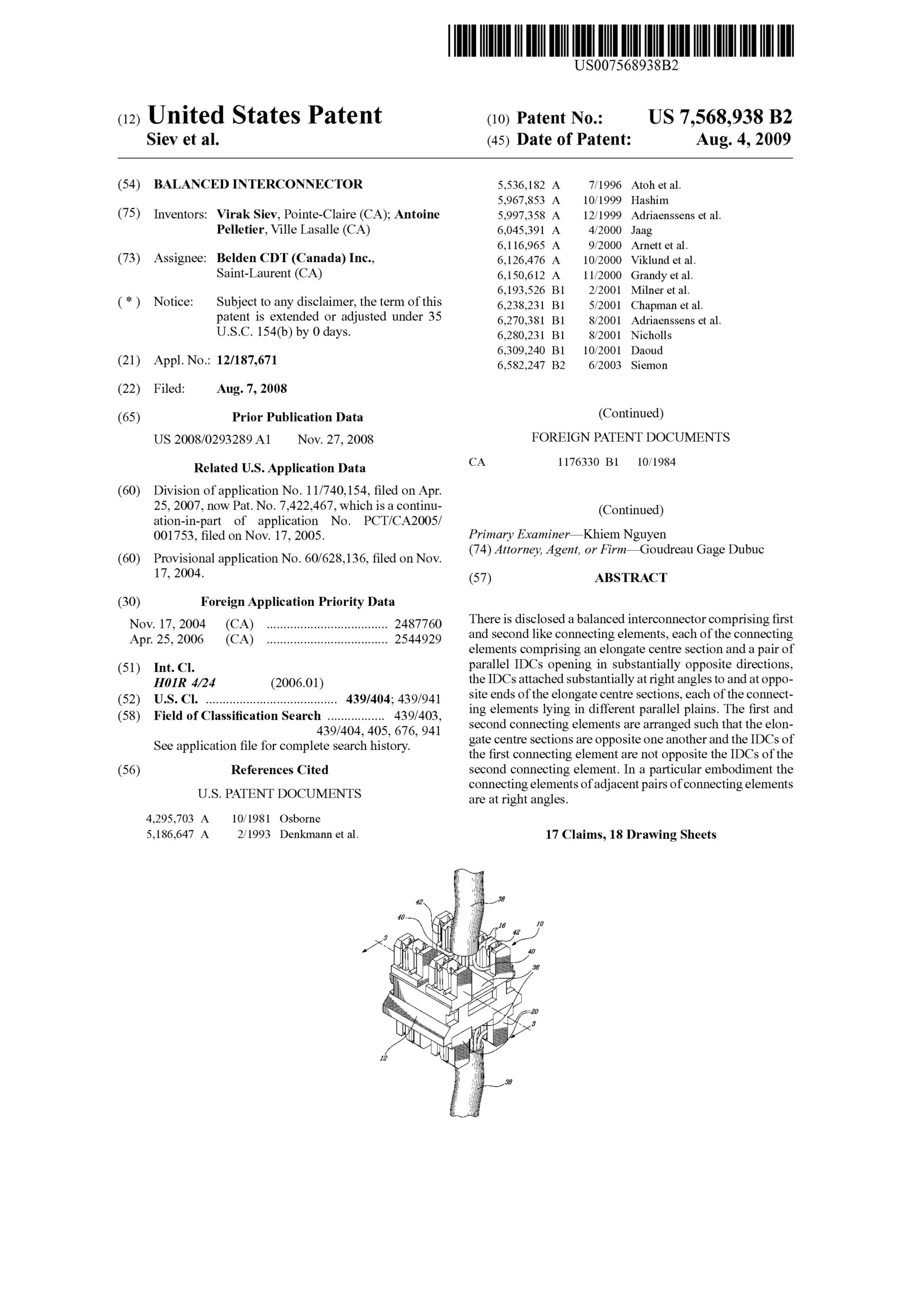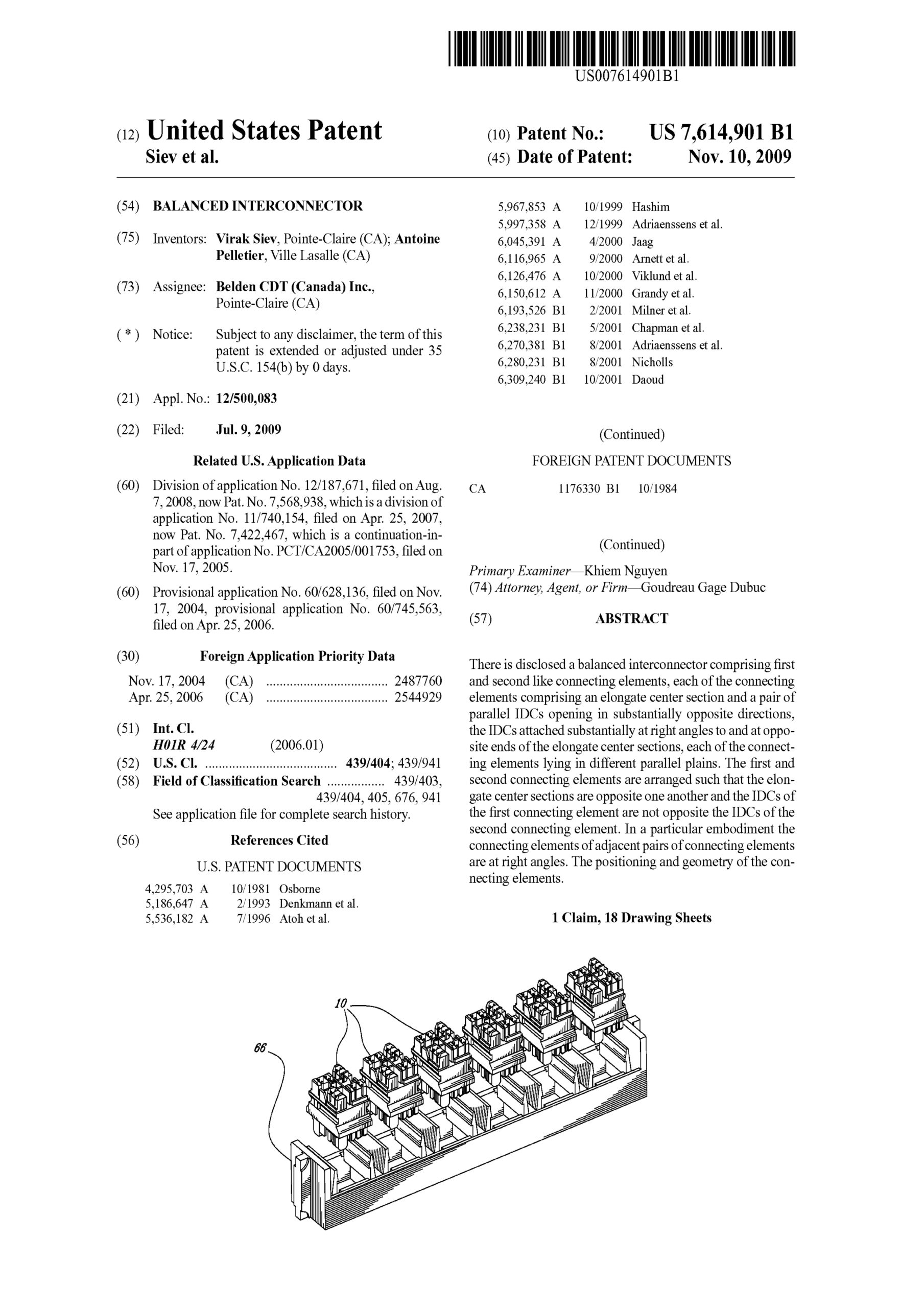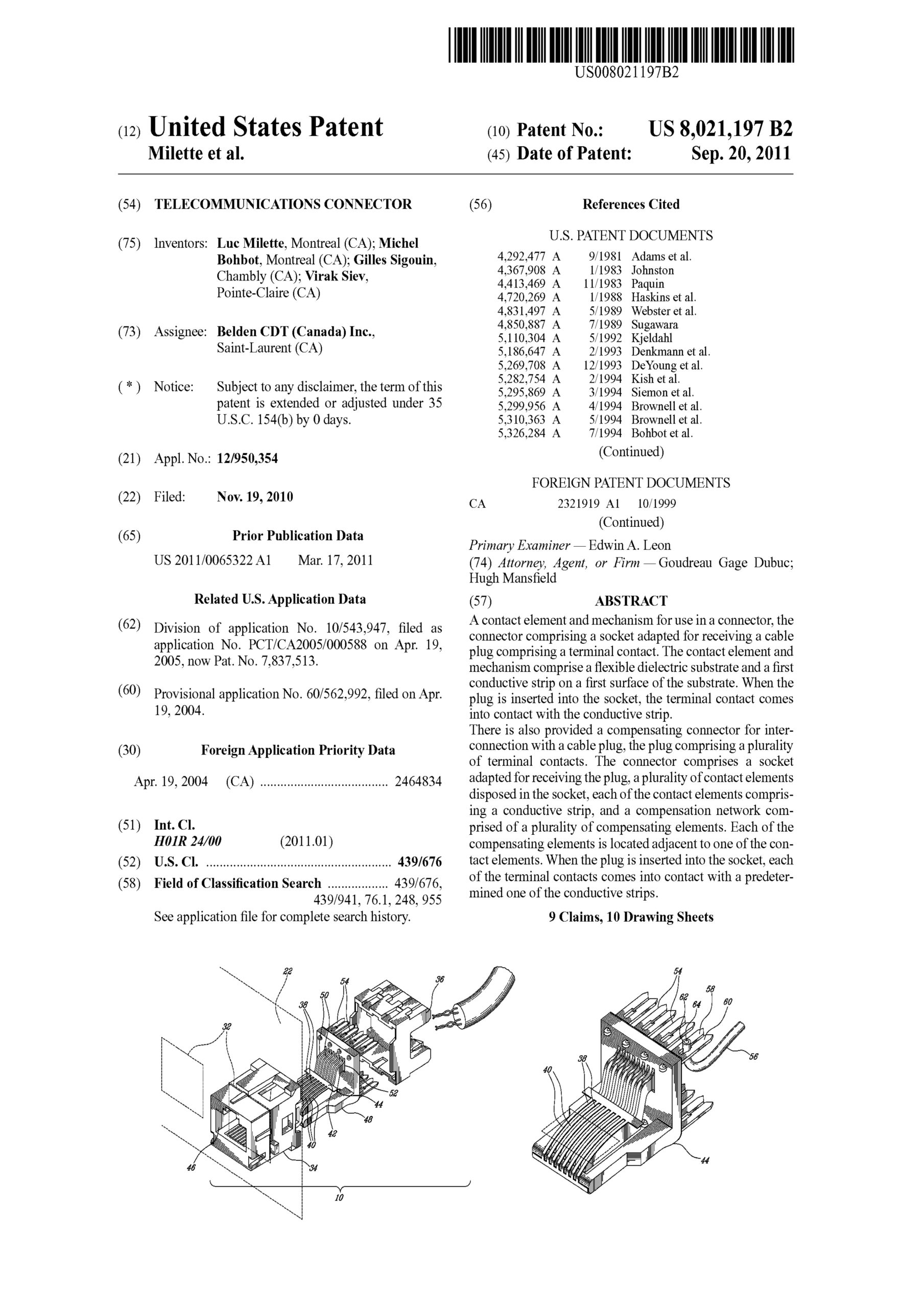Crosstalk reducing conductor and contact configuration in a communication system
translated from
There is disclosed conductor and connector configurations for use in communications systems which take advantage of the orientation and positioning of adjacent balanced pairs of conductors to reduce cross talk. These conductor and connector configurations may be used to reduce cross talk between adjacent balanced pairs of a single transmission path, or to reduce alien cross talk between adjacent balanced pairs located in different transmission paths.








